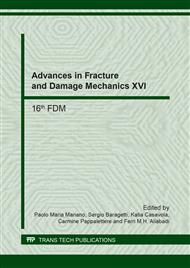p.119
p.123
p.127
p.131
p.135
p.141
p.145
p.149
p.153
Fiber Orientation Control by Stretching in Cellulose Nanofiber Green Composites
Abstract:
The presence of nanoscale cellulosic fiber; namely cellulose nanofiber, increases year by year because the mechanical and physical properties are believed to be comparable to those of common glass fibers. On the other hand, most of the reported strength data for the cellulose nanofiber-reinforced polymeric composite materials was not as high as expected. In order to obtain high-strength cellulose nanofiber-reinforced polymer composites, we tried to optimize the fiber orientation of cellulose nanofibers in poly (vinyl alcohol)-based polymer matrix by using a repeated mechanical stretching treatment. The fiber orientation of cellulose nanofibers in the poly (vinyl alcohol) matrix can be modified by changing the total amount of stretching strain applied during the multiple stretching treatments. The degree of fiber alignment was directly evaluated by observing the cellulose nanofibers on the sample surface with a digital microscope. The efficacy of proposed nanofiber alignment control has been explored experimentally and theoretically. The tensile strength and modulus of the cellulosic nanocomposites after applying the multiple stretching treatments increased by approximately 80% and 40% respectively, as compared with those of the untreated nanocomposites.
Info:
Periodical:
Pages:
135-138
Citation:
Online since:
September 2017
Authors:
Keywords:
Price:
Сopyright:
© 2017 Trans Tech Publications Ltd. All Rights Reserved
Share:
Citation:


